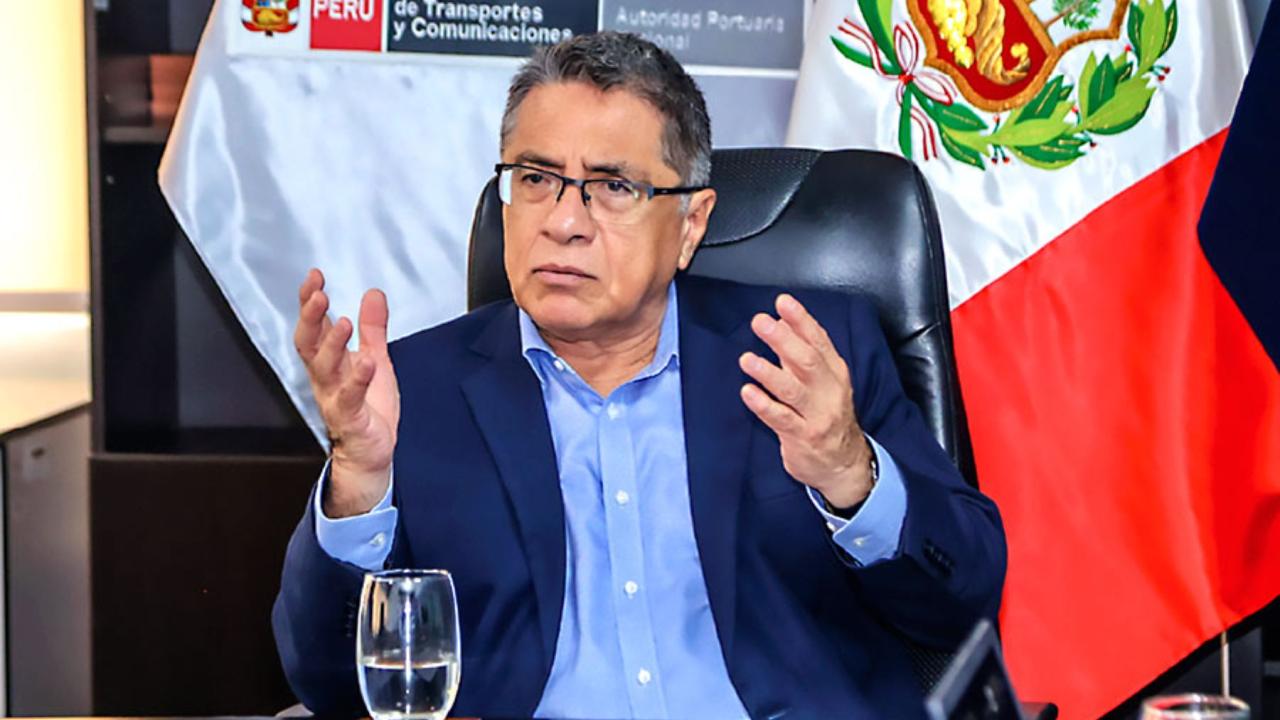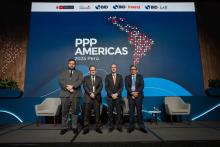
The National Port Authority of the Andean country says that terminals on the coast and in the Amazon require modernization.
Peru offers diverse investment opportunities in its port infrastructure, with projects both on the coast and in the Amazon, which have a high potential for development and modernization, said the president of the National Port Authority (APN), Juan Carlos Paz.
Although some projects, such as the port of Corío, are still under evaluation, political will and demand studies could make them viable in the future, contributing to greater connectivity and competitiveness of the national port system, he told the official newspaper El Peruano .
– What investment opportunities are there in Peru’s ports?
– We have opportunities to invest in ports (for more than US$ 1.75 billion) and they are of different kinds. For example, in Lambayeque there is a project promoted by the regional government and which is currently being studied by ProInversión to evaluate the demand that this port terminal may have.
Another is the port of Ilo (Moquegua), which is currently managed by the National Port Company (Enapu), but which lacks a breakwater and there is a willingness by the Southern company to invest in this breakwater under the Works for Taxes modality.
Then there is the port of Chimbote, which is in the hands of ProInversión, and there is a private initiative that is being evaluated. We also have San Juan de Marcona, which only needs the contract to be signed because it has already been awarded to a company, and the port of Tacna, where the regional government has already drawn up the master plan and we have approved it.
– And in the Amazon?
– We have three important port terminals in the jungle where investment is required: Sinchicuy in Iquitos, Saramiriza in Marañón and Pucallpa in Ucayali, which will give a special dynamism to the Amazon.
–The port of Corío is not yet considered?
– The Regional Government of Arequipa is looking with interest at the port of Corío, but it is part of the entire southern area that we are studying with ProInversión to determine the demand and the investment estimate.
So far, the only thing we have received for Corío are two requests for temporary technical feasibility, which any company can request, but both were rejected for technical reasons that the APN published.
–However, could the Corío port project be implemented at a later date?
– Of course. A distinction must be made between the request for temporary technical feasibility submitted by a company and the project that is in the process of being conceived and promoted by the Regional Government of Arequipa.
When a request for temporary technical feasibility is submitted, it must go through the processes and procedures required by the National Port Authority. While the Corío port project is considered in the National Port Development Plan and there is a willingness on the part of the Regional Government of Arequipa to move it forward, we are also considering it within a demand study that will determine the size and investment amount of the project.
– Could it be bigger than the port of Chancay?
– Every port must be based on a demand study and based on that it will be seen what size it could be and what the cargo that would leave through the port of Corío would be.
– Are the conditions in the area suitable for it to be a port that can receive large ships?
– Physically, it has the necessary conditions, and it is also very well located, close to an important city like Arequipa and close to other countries.
– Cabotage will be important to get the most out of the port of Chancay. Are there shipping companies interested in cabotage in Peru?
– All shipping companies working in Peru are interested in developing cabotage (transport of cargo and passengers by sea between national ports), for example, between the port terminals of Chancay and Callao, and other ports that will become increasingly important such as Paracas (Ica) and Paita (Piura), which will grow a lot, thanks to the fact that part of the cargo that is currently going to other countries will be handled by Peruvian ports through cabotage, in addition to the fact that the cargo transported by land on the Pan-American Highway could be carried by sea and be much more efficient.
– Where would the cargo from Brazil arrive to Chancay?
– Brazilian cargo can come via the Interoceanic Highway to the ports of Matarani (Arequipa) or Paracas, and from there via cabotage to Chancay, or it could also come by river to the port of Yurimaguas (Loreto), then by land to Paita and via cabotage to Chancay.
On the other hand, the fact that we have a powerful port system benefits us Peruvians, but also the neighboring countries. For example, there is a shipping company that has already announced routes to transport cargo from Chilean ports and from Peruvian ports in the south to Chancay.
– He commented that the port of Yurimaguas has been modernized and will be very important. What other areas of the Amazon need infrastructure of this type?
– Yurimaguas is already a modern port on the Huallaga River, but we need the modern ports of Saramiriza on the Marañón and Pucallpa in Ucayali. The three terminals handle barge transport, which are large platforms that carry cargo and containers, considering that they have a depth of 1.80 meters, on average. However, in Sinchicuy (Iquitos) there will be consolidation, because there will be a 10-meter depth and it can receive larger ships.
- How long will it take for Peru to consolidate its position as a port hub in Latin America?
- We are in the process, but it is not that there is nothing now. Currently, of the 3 million containers that move in Peru, 600,000 are transshipment that move in Callao, that is, export and import cargo from other countries such as Chile, Colombia and Ecuador. With Chancay, that will grow, considering the advantage of the direct route that will be established with China and Asia, that is an enormous advantage for Peru and our neighbors.
PORT SYSTEM
The National Port System comprises 59 ports for public and private use, which currently operate on the coast and rivers of the Peruvian territory.
“There are 59 port terminals, of which 42 are for private use, that is, ports owned by companies for their own use. For example, Antamina, which has a port in Huarmey for the export of minerals,” said Juan Carlos Paz.
"But there are 17 ports for public use: eight are concessioned terminals, seven are managed by Enapu, one is from the company Logística Peruana del Oriente in Pucallpa and the last one is Chancay," he added.
Juan Carlos Paz explained that the APN is the decentralized public body in charge of managing and developing the National Port System (maritime, river and lake), which is why it applies a State policy aimed at working with the private sector.
“We need an ally and that is the private sector, because the port cannot function if there is no investment and operation. From the State we promote a trustworthy environment so that this really takes place. All this with the purpose of strengthening ourselves as a country through a port system that works and serves as a gateway to the world,” he said.










